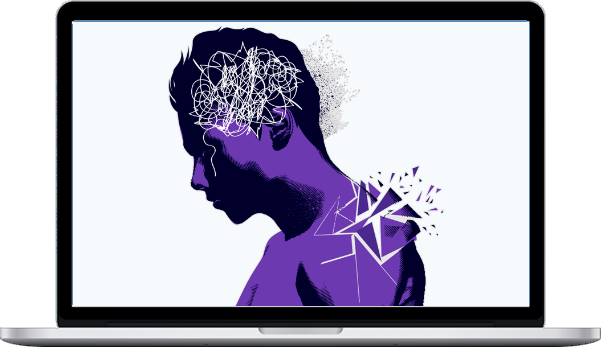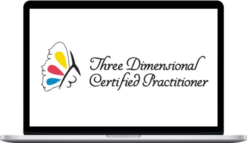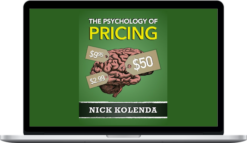NICABM – Help Clients With Trauma-Related Dysregulation
$197.00 $44.00
»Delivery: Within 24hs
Description
NICABM – Help Clients With Trauma-Related Dysregulation
Description Of Help Clients With Trauma-Related Dysregulation
Expert Strategies to Help Your Client Break Free of Trauma-Induced Cycles of Reactivity, Hypervigilance, and Fear
Dysregulated manIf you work with trauma, you likely see clients who are dysregulated.
That means you know how hard therapy can be when a client is reactive and easily triggered. Not only that, you know how much of a strain that puts on a client’s relationships, their work, and the way they approach the world.
So to help clients widen their window of tolerance more effectively, we need to:
- Understand the neurobiological difference between processing trauma and reliving it
- Downregulate the brain’s alarm systems and restore higher cognitive functioning
- Help clients explore the edges of their window (without triggering them)
That’s why we brought together four masters in the field of trauma (Bessel van der Kolk, MD, Pat Ogden, PhD, Stephen Porges, PhD, Ruth Lanius, MD, PhD) to get their expert insights on working with trauma-related dysregulation.
You’ll get their best strategies for working with the brain, body, and nervous system to help clients ground in the present, increase their window of tolerance, and process trauma.
What You’ll Learn In Help Clients With Trauma-Related Dysregulation
How to Help Clients Come Back from Trauma-Related Dysregulation
How to Help the Traumatized Brain Manage Distress
Bessel van der Kolk, MD Ruth Lanius, MD, PhD
- A Two-Step Process to Help Clients Stay Present and Learn from New Experiences
- Three Strategies That Can Improve the Traumatized Brain’s Capacity to Focus and Engage
- Mindfulness-Based Practices That Can Increase a Client’s Ability to Manage Distress
- One Essential Part of Treatment Clients Often Try to Avoid (and How to Help Them Embrace It)
How to Bring a Client Back from a State of Hypoarousal
Pat Ogden, PhD
- What Happens in the Body During Hypoarousal (and How This Can Impact Your Approach)
- Two Important Factors to Keep in Mind When Working with Hypoarousal
- A Somatic Approach That Can Help Clients Prevent Themselves from Slipping into Hypoarousal
How to Know Whether Your Client’s Dysregulation Is a Symptom of Bipolar Disorder or Trauma
Ruth Lanius, MD, PhD
- One Key Symptom That Can Help You Distinguish Emotional Dysregulation from Bipolar Disorder
- The Critical Difference Between a Manic State and Trauma-Related Anxiety
The Profound Impact of Attachment on a Client’s Ability to Self-Regulate
Pat Ogden, PhD Bessel van der Kolk, MD
- Two Specific Coping Skills That Children with Disorganized Attachment Often Adopt
- The Critical Difference Between Trauma and Disorganized Attachment (and How it Impacts a Client’s Ability to Self-Regulate)
- One Vital First Step in Addressing Dysregulation
Brain-Based Approaches for Bringing Clients Out of Dysregulation
Stephen Porges, PhD Ruth Lanius, MD, PhD Pat Ogden, PhD
- How to Help Clients Calm Their Bodies and Reengage the Thinking Brain
- The Critical Difference in the Brain Between Processing and Reliving Trauma
- How to “Retrain” the Brain’s Alarm System and Restore Higher Cognitive Functioning
Expert Strategies to Help Clients Expand Their Window of Tolerance
Bessel van der Kolk, MD Pat Ogden, PhD Stephen Porges, PhD
- A Polyvagal Approach to Helping Clients Tolerate Dysregulation
- Practical Tools that Can Help Clients Self-Soothe
- The Crucial Role of Presence in Expanding a Client’s Window of Tolerance
- Specific Breathing Exercises That Can Help Calm the Body
About NICABM
We proudly provide continuing education for practitioners who are dedicated to being the best in their craft. Our goal is to develop programs that connect you with the top experts and the latest strategies in the field, to help you achieve better outcomes, more quickly with each of your clients.
About Course Director: Ruth Buczynski, PhD
Dr. Ruth Buczynski is a licensed psychologist and founder and president of The National Institute for the Clinical Application of Behavioral Medicine (NICABM). NICABM helps physicians, nurses, psychologists, social workers, and counselors – practitioners who have some of the most significant and life-changing missions on the planet – provide cutting-edge, research-based treatment strategies to their patients. For more than 25 years, NICABM has offered accredited training and professional development programs to thousands of practitioners worldwide.
More courses from the same author: NICABM
Delivery Policy
When will I receive my course?
You will receive a link to download your course immediately or within 1 to 21 days. It depends on the product you buy, so please read the short description of the product carefully before making a purchase.
How is my course delivered?
We share courses through Google Drive, so once your order is complete, you'll receive an invitation to view the course in your email.
To avoid any delay in delivery, please provide a Google mail and enter your email address correctly in the Checkout Page.
In case you submit a wrong email address, please contact us to resend the course to the correct email.
How do I check status of my order?
Please log in to HealingCourse account then go to Order Page. You will find all your orders includes number, date, status and total price.
If the status is Processing: Your course is being uploaded. Please be patient and wait for us to complete your order. If your order has multiple courses and one of them has not been updated with the download link, the status of the order is also Processing.
If the status is Completed: Your course is ready for immediate download. Click "VIEW" to view details and download the course.
Where can I find my course?
Once your order is complete, a link to download the course will automatically be sent to your email.
You can also get the download link by logging into your HealingCourse account then going to Downloads Page.
Related products
Total sold: 8
Total sold: 3









